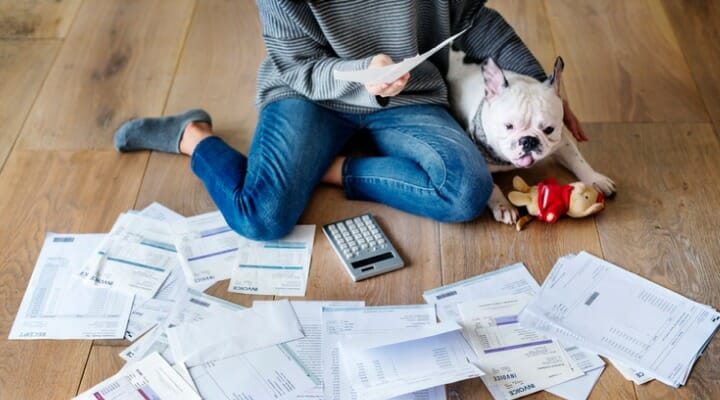Detailing your financial activity each billing cycle, a bank statement helps you keep on track with your financial planning and also helps you avoid fraudulent activity on your account. That is why it is imperative that you make sure you are signed up for your preferred method of delivery so you can ensure you easily get your bank statement online or by mail each cycle. If you have a new account or simply have not signed up for online or mail delivery, this is how to get your statements without further delay.
Check out SmartAsset’s lists of the best savings accounts and best checking accounts to learn more.
How to Get a Bank Statement Online
Online bankinghas transformed the way we manage our money today, making it a simple matter to check balances, transfer money and conduct all other sorts of banking business.
You can also access your bank statement online. If you are looking for a bank statement covering a recent month, you should be able to download a PDF version online. The exact process varies from bank to bank, but generally, you only need to log in and look for Statements. You can choose the time frame and which account you want to view
Most banks offer the option to go paperless, so you can only receive and review your statements online. Statements are generally available instantly, though you may need to request if you prefer a copy to be emailed to you. It is a good idea to regularly download and save your bank statements on your computer, just in case you need to access them in the future.
In addition to downloadable PDF statements, the main page of your account should also list out your recent transactions in an account summary. The transactions may be broken out by statement cycle or all together. While this is not technically your statement, and may include some pending charges, this is an easy way to review recent credits and debits from your account.
How to Get a Bank Statement by Mail

When you sign up for a bank account, you will typically receive your monthly bank statements automatically by mail. They’re mailed out monthly based on when you opened your account, so they won’t necessarily align with the beginning or end of the calendar month. These will look identical to the downloadable PDFs from the website. Keep in mind that they are mailed out monthly based on when you opened your account, so they may not necessarily align with the beginning or end of each calendar month.
What happens if you cannot find your paper statement? Perhaps, you misplaced it, or it got lost in the mail.Maybe you chose to only receive online statements.
Whatever the reason, most banks allow you to request a paper statement to be mailed to you. This request form is likely in the same place as your digital statements. It may be a different option under the same “Statement” heading, or there may be a button on the page showing your statements.
If you choose to request a printed statement, be careful, as your bank may charge a fee – typically between $1 and $3 – for this service.
If you do not have access to online banking, you can call your bank’s customer service line. They can help you get a paper copy of your statement. You can find the number for customer service on the back of your debit card or on the contact page of your bank’s website.
If your bank does not have an option to request a paper statement, you can always print a downloaded PDF so you have a physical copy of your statement. This printed version will look exactly like the mailed version of your statement and is considered an official document.
What’s Included in a Bank Statement?
There are several key components of a bank statement.
- Account summary: This details general information about your account, such as the account number and account holder. It may also outline any account services, as well as contact information in case you have a question or spot a problem.
- Balance summary: A bank statement will include a general overview of your finances that includes several key figures, such as:
- Starting balance
- Deposits and additions
- Checks and deductions
- Ending balance
- Average monthly balance
- Transaction summary: This details all transactions for the billing period and are sectioned out by category.
- Interest summary: If you have an interest-bearing account, this is where you will see any earnings you may have received during that billing cycle
- Activity detail: Here you will see detailed information regarding each transaction, with information like the transaction date, amount and description for easier tracking
How Long Do Banks Retain Statements?
Banks must keep statements for a minimum of five years, but others may keep them for longer. It is important to keep copies of your statements filed either physically or digitally, just in case you need them and your bank no longer has them. This is especially critical for any year-end statements you receive before tax time, as these tend to recap your interest and other taxable earnings for the year. If you are audited by the IRS, you can use these statements to prove how much you earned.
When you no longer need your bank statement, it is advisable to shred them, as you would any document containing private financial information.
Bottom Line

Getting a copy of your bank statement is easy. Your online banking page will list out all of your statements. From there, you can download a PDF or request a paper version by mail. You can also call your bank’s customer service line for help. If you prefer a paper statement every month, most banks will do so by default unless you specifically choose to go paperless and receive only online statements.
Tips for Getting More From Your Bank
- Checking and savings accounts are one part of your financial picture. If you want to work toward larger financial goals like retirement, consider SmartAsset’s free tool, which can match you with vetted financial advisors who serve your area. You can have free introductory calls with your advisor matches to decide which one you feel is right for you. If you’re ready to find an advisor who can help you achieve your financial goals, get started now.
- If you’re comfortable in the world of online banking, you might consider switching to an online-only bank. They tend to have higher interest rates than traditional banks. And some, like Ally, still offer in-person access to your cash through ATMs.
Photo credit: ©iStock.com/Steve Debenport, ©iStock.com/jacoblund, ©iStock.com/Rawpixel
